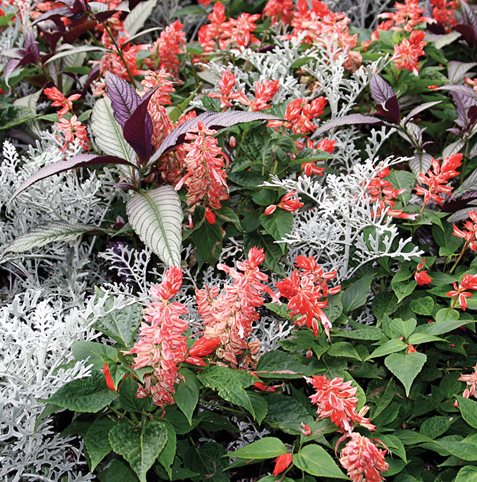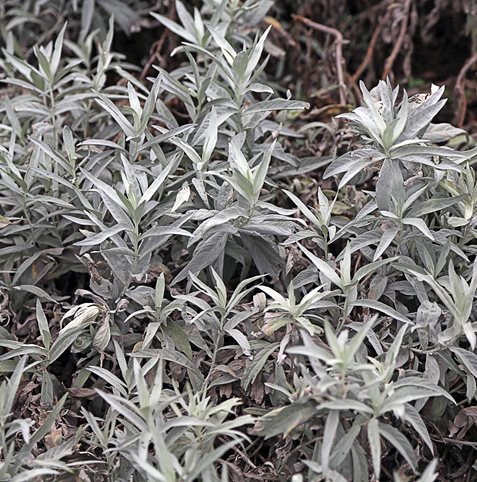Creating Night Garden Drama
Plant suggestions and lighting tips for a cocktail-hour gardenIn midsummer, our gardens are gloriously illuminated by the long days of sunlight. However, the blackness of night also offers an opportunity for creating garden drama and casting our landscape in a whole new perspective.
As evening moves into night, and the moon rises, some plants become more prominent while others disappear. Plants that come dressed in silver or white are wearing the perfect attire for a cocktail-hour garden, creating a romantic gathering place for twilight celebrations.
“The cocktail hour garden is a landscape that reminds us to put our distractions aside and be in the present moment. It’s an environment that, like a strong ocean current, pulls us determinedly into the natural world and invites us to relax and better sync our rhythms to the flora and fauna around us,” says horticultural consultant C.L. Fornari, in her new book The Cocktail Hour Garden.
Here are her tips for making your garden shine, both day and night:
Add shimmer with silverEven without additional lighting, plants with silver foliage are visible after dark and attractive in beds and containers. Silver-foliaged plants also tend to be more drought and heat tolerant than their green-leafed counterparts, says Fornari, because the fine white hairs that cover the foliage help reflect the sun and retain water. They also won’t be nibbled by rabbits and deer that stroll through your cocktail-hour gatherings. Fornari recommends using these stylish silvers to fill your garden with texture and contrast.
- Wormwood (Artemisia ‘Powis Castle’) Zones 6-10 and (A. schmidtiana ‘Silver Mound’) Zones 4-9
- Japanese Painted Fern (Athyrium niponicum hybrids) Zones 4-9
- Heartleaf Bugloss (Brunnera macrophylla ‘Jack Frost’) Zones 3-8
- Cardoon (Cynara cardunculus) Zones 7-9
- Silver Nickel Vine (Dicondra argentea ‘Silver Falls’) Zones 10-12
- Dusty Miller (Jacobaea maritime aka Senecio cineraria) Zones 8-10
- Licorice Plant (Helichrysum petiolare ‘White Licorice’) Zones 10-11
- Blue Switch Grass (Panicum amarum ‘Dewey Blue’) Zones 2-9
- Lungwort (Pulmonaria ‘Silver Bouquet’ and ‘Silver Shimmers’) Zones 3-8
Dress it up in whiteThe design of a cocktail-hour garden usually includes plants that are more noticeable at night and reflect the moonlight. For this purpose, you can’t go wrong with white flowers. Here are some white-flowering plants that Fornai says will stand out after dark.
- Dappled Willow (Salix integra ‘Hakuro Nishiki’) Zones 4-9
- Diamond Frost Euphorbia (Euphorbia hypericfolia ‘Inneuphdia’) Zones 10-11
- Giant Fleece Flower (Persicaria polymorpha) Zones 3-8B
- ‘Blue River II’ Hibiscus (Hibiscus moscheutos ‘Blue River II’) Zones 4-10
- Pinky Winky Hydrangea (Hydrangea paniculata ‘DVPpinky’) Zones 3-9
- Phlox ‘David’ (Phlox paniculata ‘David’) Zones 4-8
- ‘Star Cluster’ Tickseed (Coreopsis ‘Star Cluster’) Zones 5-9
- White Profusion Zinnias (Zinnia Profusion hybrid) Annuals anywhere
Light the stage“Since designing a garden has many parallels to planning a stage set, it’s only natural that lighting should be part of the plan. And just as it is in the theater, lights that enhance the cocktail-hour garden are chosen for a combination of pure function and dramatic effect,” says Fornari.
Functional lighting includes lights on buildings, down pathways, and along stairs, which illuminate for the purpose of making spaces safe and visible. When the subject of illumination is a plant, tree, or garden ornament, artificial lighting can also be used for dramatic effect.
Fornari suggests installing spotlights at the base of trees and lighting the pools of fountains. You can also hide outdoor lights among rocks, along pond edges, or trained onto sculptures to create an atmosphere of mystery.
Excerpt and photographs reprinted with permission from THE COCKTAIL HOUR GARDEN by C.L. Fornari, copyright © 2016, published by St. Lynn’s Press.







